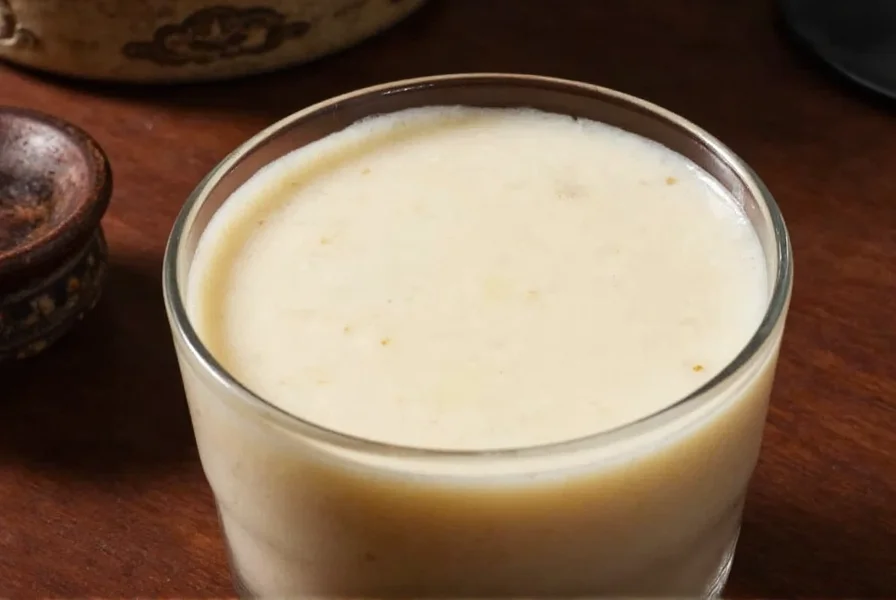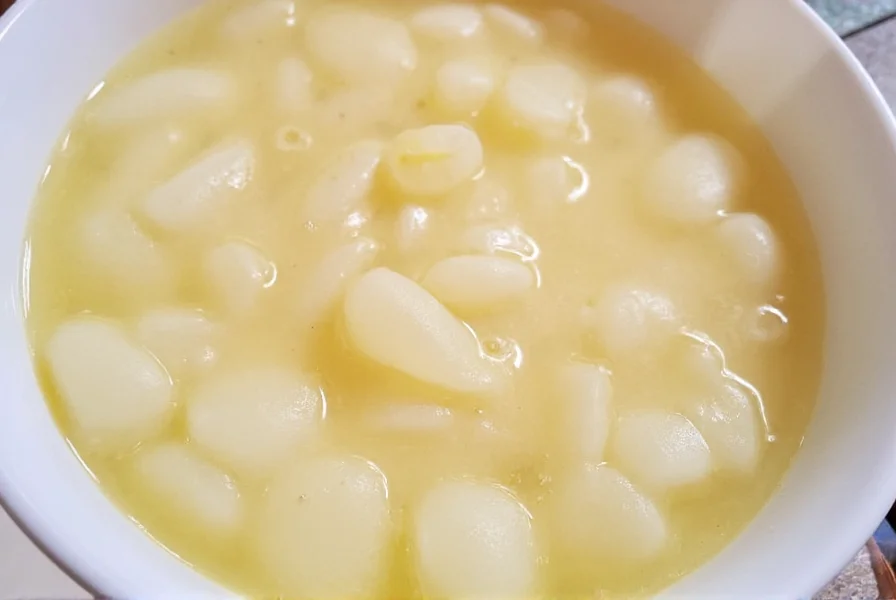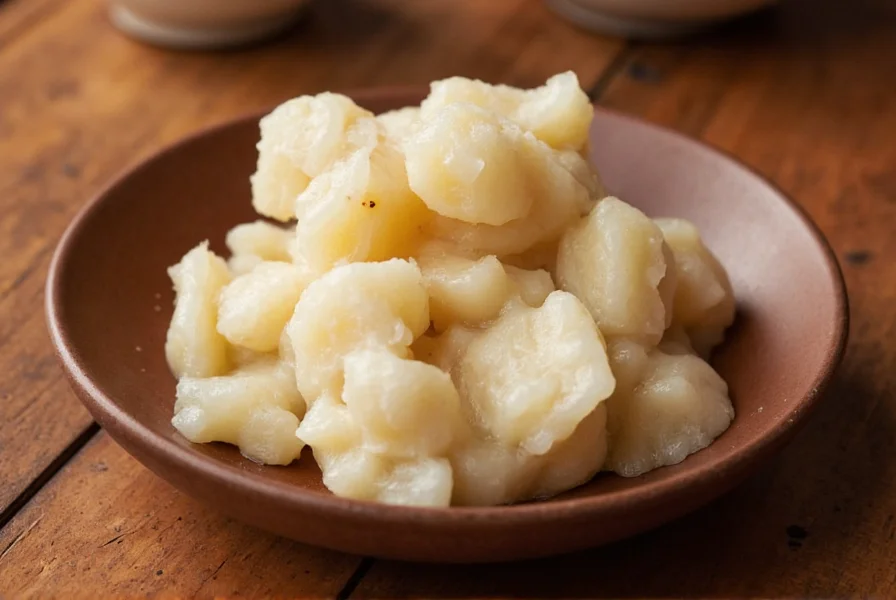Ginger milk represents one of the most elegant examples of traditional Chinese dessert craftsmanship, where simplicity meets culinary science. This beloved Cantonese treat transforms just three basic ingredients—fresh milk, ginger, and sugar—into a velvety dessert through a precise chemical reaction. The magic happens when the protease enzyme in fresh ginger interacts with the proteins in hot milk, causing it to coagulate into a silky custard without any added thickeners.
The Science Behind Ginger Milk's Unique Texture
Understanding the chemistry of ginger milk explains why this dessert requires such careful preparation. Fresh ginger contains zingibain, a proteolytic enzyme that breaks down casein proteins in milk when introduced at precisely 70-80°C (158-176°F). This enzymatic reaction causes the milk to coagulate into a smooth, tender curd similar to silken tofu. The temperature must be carefully controlled—too hot and the enzyme becomes denatured, too cool and the reaction won't occur properly.
| Essential Ginger Milk Components | Function | Traditional Preparation Tip |
|---|---|---|
| Fresh ginger juice | Provides zingibain enzyme for coagulation | Must be freshly extracted; frozen or bottled won't work |
| Whole milk (65-70°C) | Protein base for enzymatic reaction | Temperature critical for proper curdling |
| Cane sugar | Flavor balance and texture enhancer | Added before heating for optimal integration |
Cultural Significance of Ginger Milk in Chinese Cuisine
Originating in the Pearl River Delta region, ginger milk has been a staple in Cantonese dessert culture for over a century. Traditionally served in small porcelain bowls, this dessert holds particular importance during colder months and postpartum recovery periods in Chinese tradition. Many Chinese families consider ginger milk an essential part of “zuo yuezi” (sitting the month), the 30-day postpartum recovery period where warm, nourishing foods are emphasized.
The preparation method reflects Chinese culinary philosophy—using natural ingredients to create balance. Ginger's warming properties counter milk's cooling nature according to traditional Chinese medicine principles, creating a harmonious dish suitable for various constitutions. Street vendors in Guangdong and Hong Kong have perfected this technique, with some establishments specializing exclusively in ginger milk for generations.

Authentic Preparation Method
Creating perfect ginger milk requires attention to detail rather than complex techniques. The traditional method involves:
- Grating fresh ginger and squeezing through cheesecloth to extract 1-2 teaspoons of juice per serving
- Heating whole milk with sugar to 70-80°C (do not boil)
- Pouring the hot milk from approximately 30cm height into the ginger juice
- Covering and waiting 5-10 minutes for natural coagulation
The height of the pour incorporates air and ensures proper mixing without destroying the enzyme activity. Many modern variations include additions like egg whites for extra silkiness or osmanthus flowers for floral notes, but purists insist the classic three-ingredient version represents the pinnacle of this dessert's artistry.
Nutritional Profile and Traditional Beliefs
While not a significant source of vitamins or minerals, ginger milk combines the calcium and protein of milk with ginger's bioactive compounds. Traditional Chinese medicine practitioners have long associated ginger with improved circulation and digestive health. Many Cantonese households serve ginger milk as a soothing remedy for minor colds or digestive discomfort, though these uses reflect cultural tradition rather than clinically proven medical treatment.
Modern research suggests ginger contains compounds with potential anti-inflammatory properties, but these findings shouldn't be interpreted as medical advice. The dessert's primary value remains its cultural significance and comforting qualities rather than specific health benefits.

Where to Experience Authentic Ginger Milk
For those seeking authentic ginger milk, traditional Chinese dessert houses in Guangdong province and Hong Kong remain the gold standard. Establishments like Kam Wah Cafe in Hong Kong or Lianxiang Lou in Guangzhou have perfected this dessert over decades. In Western countries, authentic ginger milk can sometimes be found in Chinatown dessert cafes that specialize in Cantonese sweets rather than more generic Chinese restaurants.
When evaluating ginger milk quality, look for a smooth, uniform texture without separation, a delicate ginger aroma that's present but not overwhelming, and a clean finish without bitterness. The best versions achieve perfect balance where neither milk nor ginger dominates the flavor profile.
Common Variations Across Regions
While the Cantonese version remains most famous, regional variations exist throughout China:
- Sichuan style: Often includes a touch of Sichuan pepper for additional warmth
- Hakka interpretation: May incorporate brown sugar for deeper molasses notes
- Modern fusion: Some contemporary chefs add matcha or black sesame for visual contrast
These variations demonstrate ginger milk's adaptability while maintaining its essential character. The dessert's simplicity allows for creative interpretation while preserving its fundamental appeal.
Perfecting Ginger Milk at Home
Home preparation presents challenges but yields rewarding results. Key success factors include:
- Using fresh, fibrous ginger root (older ginger works better)
- Maintaining precise milk temperature (use a thermometer)
- Avoiding stirring after combining ingredients
- Using porcelain or ceramic bowls which retain heat better
Troubleshooting common issues: If the milk doesn't set, the ginger may have been insufficiently fresh or the milk too hot. If it's bitter, the ginger might have been over-extracted or the milk boiled. Patience and practice typically yield perfect results within a few attempts.
Frequently Asked Questions
What makes ginger milk curdle naturally without eggs?
Ginger milk curdles due to zingibain, an enzyme in fresh ginger that reacts with milk proteins at specific temperatures (70-80°C). This enzymatic reaction causes the milk to coagulate into a smooth custard without any added thickeners or eggs.
Why does my homemade ginger milk not set properly?
Common reasons include using bottled ginger juice (must be fresh), incorrect milk temperature (too hot denatures the enzyme, too cool prevents reaction), or insufficient ginger quantity. The milk should be poured from height to properly mix with the ginger juice without destroying enzyme activity.
Is ginger milk suitable for lactose intolerant individuals?
Traditional ginger milk uses dairy milk, making it unsuitable for those with lactose intolerance. Some modern adaptations use lactose-free milk alternatives, though results may vary as the enzymatic reaction depends on specific milk proteins.
What's the difference between ginger milk and ginger tea?
Ginger milk is a dessert where milk curdles into a custard texture through enzymatic reaction with fresh ginger juice. Ginger tea is a beverage made by steeping ginger in hot water, often with additional ingredients like lemon or honey, without any coagulation process.











 浙公网安备
33010002000092号
浙公网安备
33010002000092号 浙B2-20120091-4
浙B2-20120091-4